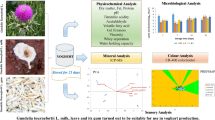Abstract
The influence of wheat flour partial replacement with different types of resistant starch (RS) in muffin batter rheological properties and in baked muffin height, volume and number of air bubbles was investigated. The type of RS affected the above-described properties differently. In comparison to the control batter (without RS), replacement with RS type 3 (Novelose 330 and C*Actistar) increased viscosity and viscoelasticity, at both 20 and 80 °C. On the contrary, RS type 2 (Hi-maize 260 and Novelose 240) decreased them. These differences in viscosity and viscoelasticity were related to different baking performance. The RS3 type muffins had higher height, volume and number of air bubbles than the RS2 type muffins. An increase in viscosity and elasticity of the raw batter and during the heating process favours bubble retention and stability, thus favours baking performance. However, despite the improvement provided by the RS type 3, the baking performance was still lower than in the control muffins. One feature that may contribute to the baking differences is the delay in all the RS batters in the starch gelatinization temperature.





Similar content being viewed by others

References
Asp NG, Björck I (1992) Trends Food Sci Tech 3(5):111–114
Champ M (2004) Resistant starch. In: Eliasson AC (ed) Starch in food: structure, function and applications. Woodhead Publishing Ltd, Cambridge
Baghurst PA, Baghurst KI, Record SJ (1996) Food Aust 48(3):S3–S35
Lin PY, Czuchajowska Z, Pomeranz Y (1994) Cereal Chem 71(1):69–75
Yue P, Waring S (1998) Food Aust 50(12):615–621
Baixauli R, Salvador A, Fiszman SM (2007). doi:10.1007/s00217-007-0565-4
Baixauli R, Sanz T, Salvador A, Fiszman SM (2007). doi:10.1016/j.jcs.2007.06.015
Sozer N, Dalgiç AC, Kaya A (2007) J Food Eng 81(2):476–484
Sanz T, Salvador A, Fiszman SM (2007). doi:10.1016/j.foodhyd.2007.01.018
Sanz T, Salvador A, Fiszman SM (2007). doi: 10.1007/s00217-007-0687-8
Bath DE, Shelke K, Hoseney RC (1992) Cereal Foods World 37(7):495–500
Handleman AR, Conn JF, Lyons JW (1961) Cereal Chem 38:294–305
Kim HY, Hyeon WY, Lim HS, Lim ST (2001) Cereal Chem 78(3):267–271
Lakshminarayan SM, Rathinam V, KrishnaRau L (2006) J Sci Food Agric 86:706–712
Lee S, Kim S, Inglett GE (2005) Cereal Chem 82(2):120–124
Pierce MM, Walker CE (1987) Cereal Chem 64(4):222–225
Shelke K, Faubion JM, Hoseney RC (1990) Cereal Chem 67(6):575–580
Acknowledgments
The authors wish to thank National Starch Food Innovation and Cargill for the supply of Resistant Starch. The authors are also indebted to Conselleria de Empresa, Universidad y Ciencia of Valencia Government for financial support (Project GV/2007/246) and to Fondo Social Europeo for financing the contract of author T. Sanz in the program I3P from CSIC.
Author information
Authors and Affiliations
Corresponding author
Rights and permissions
About this article
Cite this article
Sanz, T., Salvador, A. & Fiszman, S.M. Evaluation of four types of resistant starch in muffin baking performance and relationship with batter rheology. Eur Food Res Technol 227, 813–819 (2008). https://doi.org/10.1007/s00217-007-0791-9
Received:
Revised:
Accepted:
Published:
Issue Date:
DOI: https://doi.org/10.1007/s00217-007-0791-9



